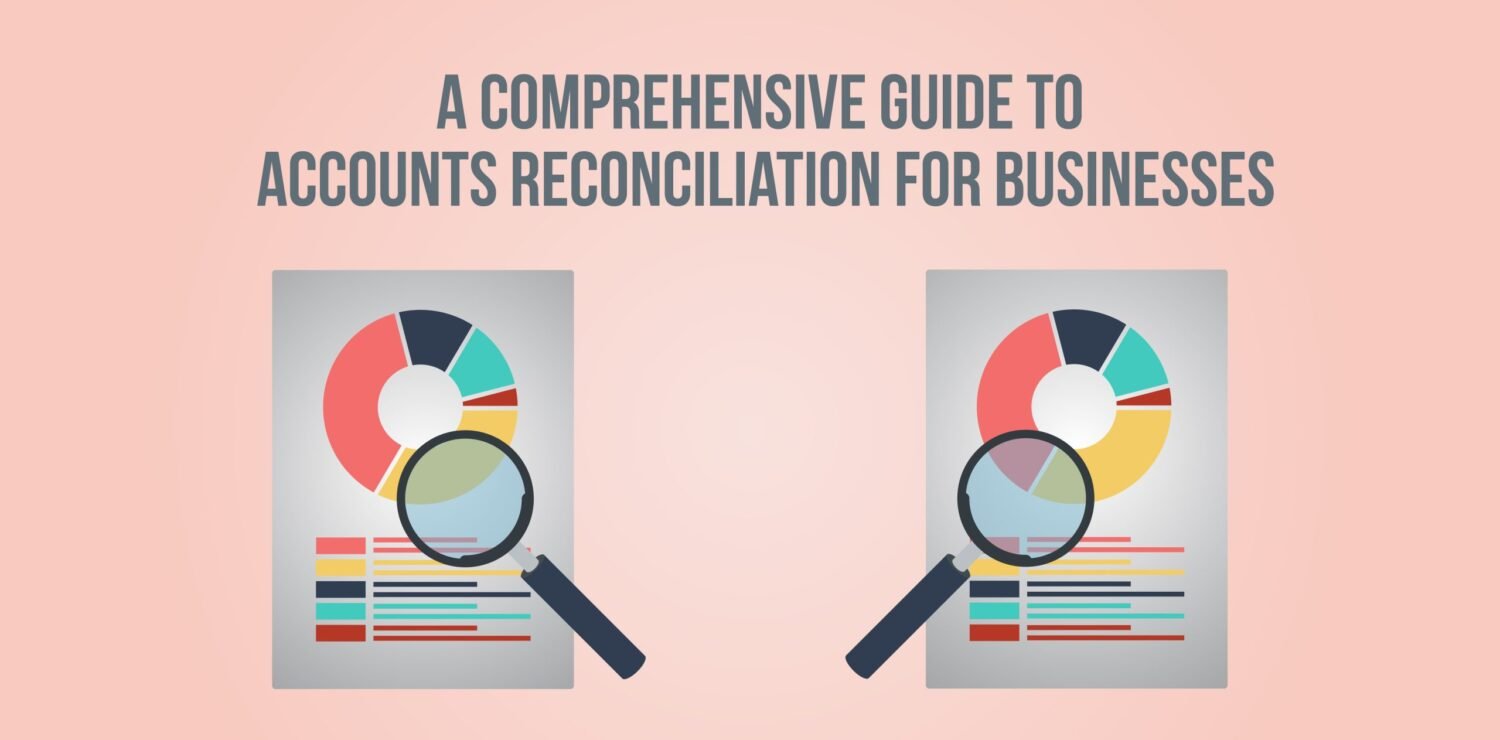
Bank reconciliation is a crucial financial process that ensures a company’s financial records align with the bank’s statement. It helps detect errors, identify fraudulent transactions, and maintain accurate financial reporting. This process is particularly essential for businesses handling large volumes of transactions to ensure financial accuracy and transparency.
Importance of Bank Reconciliation
Performing regular bank reconciliations offers several benefits:
- Detects Errors: Identifies discrepancies such as duplicate transactions, missing deposits, or bank errors.
- Prevents Fraud: Helps uncover unauthorized transactions or forged checks.
- Ensures Accuracy: Aligns book balances with actual bank balances for correct financial reporting.
- Improves Cash Flow Management: Keeps track of available funds and outstanding checks.
- Aids in Compliance: Helps businesses adhere to financial regulations and audit requirements.
Step-by-Step Bank Reconciliation Example
Step 1: Gather Required Documents
To begin the reconciliation process, gather:
- The company’s cash ledger or check register.
- The bank statement for the reconciliation period.
- Any deposit slips and canceled checks.
Step 2: Compare Bank Statement with Company Records
Review the bank statement line by line, matching transactions with the company’s cash ledger. Identify differences such as:
- Outstanding Checks: Checks issued but not yet cleared by the bank.
- Deposits in Transit: Deposits recorded in company books but not yet reflected in the bank statement.
- Bank Fees and Interest: Charges deducted or interest earned not yet recorded in company books.
Step 3: Identify Discrepancies
Once all transactions have been matched, note any discrepancies, including:
- Bank Errors: Rare but possible, such as incorrect charges or unprocessed deposits.
- Company Errors: Misrecorded transactions, duplicate entries, or missing transactions.
Step 4: Adjust the Cash Book
Update the company’s financial records to reflect:
- Bank Service Charges: Deduct any service fees.
- Interest Earned: Add any interest income.
- Errors in Company Records: Correct any mistakes found in the cash ledger.
Step 5: Adjust the Bank Statement (if needed)
If any bank errors exist, contact the bank to rectify them. Adjustments may include:
- Requesting corrections for incorrectly processed checks.
- Verifying uncredited deposits.
- Resolving unauthorized transactions.
Step 6: Confirm and Reconcile Balances
Ensure the adjusted cash book balance matches the corrected bank statement balance. If they still differ, review outstanding transactions and repeat the reconciliation process until both balances align.
Example of a Bank Reconciliation Statement
To illustrate, consider the following scenario:
Company XYZ’s Cash Ledger as of February 28, 2025:
| Date | Description | Debit | Credit | Balance |
|---|---|---|---|---|
| Feb 1 | Beginning Balance | $10,000 | ||
| Feb 5 | Customer Payment | $5,000 | $15,000 | |
| Feb 10 | Check #101 Issued | $3,000 | $12,000 | |
| Feb 15 | Bank Service Fee | $50 | $11,950 |
Bank Statement as of February 28, 2025:
| Date | Description | Amount | Type |
| Feb 5 | Customer Payment | $5,000 | Credit |
| Feb 10 | Check #101 | $3,000 | Debit |
| Feb 15 | Bank Service Fee | $50 | Debit |
| Feb 25 | Interest Earned | $25 | Credit |
Reconciliation Adjustments:
- Outstanding Checks: None.
- Deposits in Transit: None.
- Bank Fees: $50 recorded.
- Interest Earned: $25 not yet recorded in books.
- Corrected Cash Balance: $11,950 + $25 = $11,975.
Final Reconciled Balance: $11,975
Best Practices for Bank Reconciliation
- Perform Reconciliations Regularly: Monthly reconciliations prevent accumulation of errors and discrepancies.
- Maintain Proper Documentation: Keep records of bank statements, canceled checks, and receipts for future reference.
- Use Accounting Software: Tools like QuickBooks or Xero automate reconciliation and reduce manual errors.
- Establish Internal Controls: Segregate duties to ensure accountability and prevent fraud.
- Investigate Discrepancies Promptly: Address any errors or unauthorized transactions immediately.
Common Challenges in Bank Reconciliation and Solutions
| Challenge | Solution |
| Unrecorded Bank Transactions | Regularly review and update records. |
| Outstanding Checks Causing Mismatches | Track issued checks and follow up on uncleared ones. |
| Fraudulent Transactions | Implement strong internal controls and review transactions frequently. |
| Manual Errors | Use automated reconciliation tools to minimize mistakes. |
Conclusion
Bank reconciliation is a vital accounting process that ensures financial accuracy and integrity. By following structured steps and best practices, businesses can maintain precise financial records, prevent fraud, and manage cash flow effectively. Regular reconciliations not only enhance financial transparency but also contribute to better financial decision-making.
Faq’s
1. What is a bank reconciliation, and why is it important for businesses?
A bank reconciliation is the process of comparing a company’s internal financial records (such as a cash ledger) with its bank statement to ensure they match. This helps identify discrepancies, prevent fraud, catch errors, and ensure accurate financial reporting.
2. Can you provide a step-by-step bank reconciliation example?
Yes! Here’s an example:
Step 1: Obtain the company’s cash ledger and the bank statement for the same period.
Step 2: Compare the ending balances. Suppose the cash ledger shows $5,000 while the bank statement shows $4,800.
Step 3: Identify differences, such as outstanding checks ($300), deposits in transit ($200), and bank fees ($100).
Step 4: Adjust the cash ledger or note items for future updates. The reconciled balance should match after adjustments.
3. What common discrepancies arise during bank reconciliation, and how can they be resolved?
- Outstanding checks (issued but not cleared): Wait until the bank processes them.
- Deposits in transit (deposited but not recorded by the bank): Verify they clear in the next cycle.
- Bank errors: Contact the bank to correct them.
- Accounting errors (duplicate entries, missing transactions): Adjust internal records accordingly.
4. How does a bank reconciliation help detect fraud or errors in financial statements?
It reveals unauthorized transactions, forged checks, duplicate payments, missing deposits, and unauthorized withdrawals. If discrepancies persist, it may indicate fraud or accounting errors that require investigation.
5. What documents are needed to perform a bank reconciliation?
- The company’s cash ledger or accounting records
- The bank statement for the relevant period
- Any supporting documents such as check stubs, deposit slips, and bank fee notifications
6. How often should businesses conduct bank reconciliations?
Businesses should reconcile their bank accounts monthly at a minimum, but high-volume companies may do it weekly or daily to ensure up-to-date records and detect errors quickly.
7. What is the difference between a bank statement balance and a cash book balance?
- Bank statement balance: The amount shown in the bank’s records.
- Cash book balance: The company’s internal record of cash transactions.
Differences occur due to outstanding checks, deposits in transit, and bank fees.
8. How can accounting software simplify the bank reconciliation process?
Modern accounting software automates reconciliation by:
- Importing bank transactions automatically
- Flagging discrepancies
- Suggesting adjustments
- Generating reconciliation reports instantly
9. What are outstanding checks and deposits in transit in a bank reconciliation?
- Outstanding checks: Payments issued but not yet cleared by the bank.
- Deposits in transit: Deposits recorded in the company’s books but not yet processed by the bank.
10. How do companies handle unreconciled transactions in their financial reports?
If transactions remain unreconciled, companies:
- Investigate the reason (e.g., delays, errors, fraud).
- Adjust internal records accordingly.
- Record temporary reconciling items and follow up in the next cycle.
- Document discrepancies for auditing purposes.
